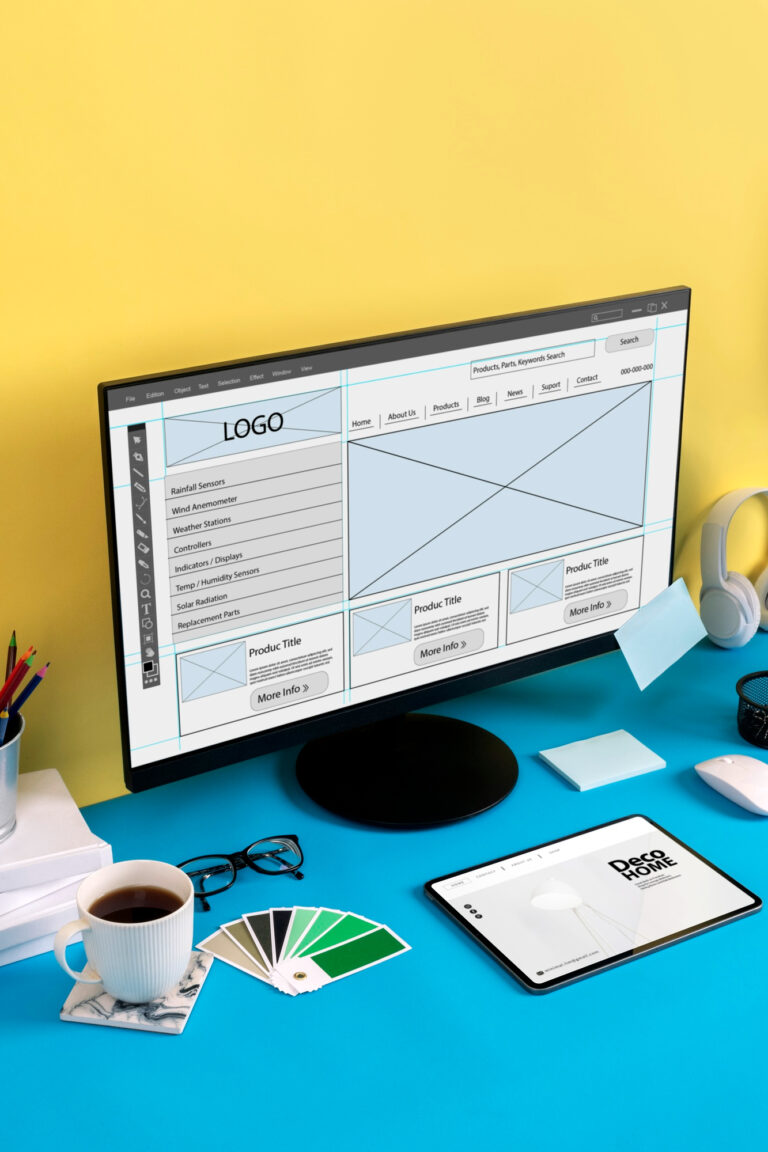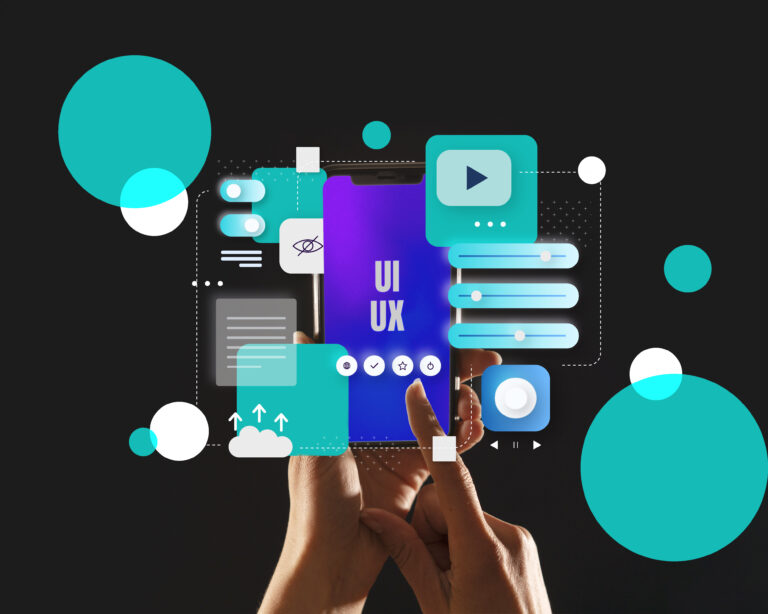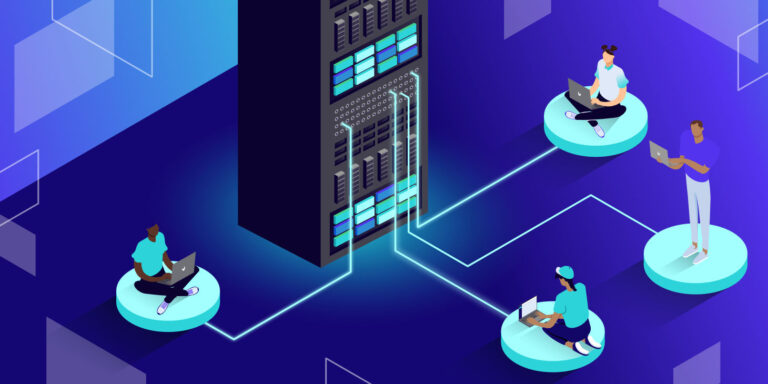The digital world evolves at a breakneck pace, and staying ahead in web design means keeping up with the latest trends. As we enter 2025, new technologies and user preferences are shaping the future of web design. Here are the top trends to watch this year.
1. Immersive 3D and Interactive Elements
Websites are shifting away from traditional, flat designs and are now integrating dynamic 3D visuals along with interactive features. This change transforms the way users experience the web. Instead of just reading information, they can engage with content in a more immersive way. These interactive elements pull users in and motivate them to explore the site further, making their time online more enjoyable and memorable.
Technological improvements in tools like WebGL have made it easier for developers to bring 3D models to life on websites. This includes interactive animations that respond to user actions, creating a sense of involvement. Virtual reality components are also becoming more common, allowing users to step into a digital space and interact within it.
As these technologies grow, the potential for creativity and engagement in web design expands. Businesses are starting to realize that providing a lively experience can greatly enhance user interest and retention. Visitors are more likely to revisit a site that offers something unique and visually striking. In this way, websites are not just sources of information but also platforms for exploration and interaction that keep audiences captivated.

2. AI-Driven Personalization
Artificial intelligence is changing how we design websites. In 2025, web design will focus on giving users a personalized experience. AI tools, like chatbots and recommendation engines, will play a big role. These tools analyze user behavior to understand what people like and how they interact with websites.
With this data, websites will adjust their content and design to match individual preferences. For example, if a user often shops for outdoor gear, the site may highlight camping equipment or hiking shoes. This kind of tailored experience makes users feel valued. It encourages them to explore more and engage with the site.
As websites adapt in real time, they create a more enjoyable experience. Users will find what they need faster, which leads to happier visitors. Happy users are more likely to make purchases, sign up for services, or return to the site later. This increased satisfaction directly boosts conversion rates, helping businesses grow.
In summary, AI is not just a trend; it’s reshaping web design. By focusing on personalization, websites will cater to what users want, resulting in an improved overall experience. The future of web design is about making each user feel like the site was made just for them.

3. Minimalistic and Dark Mode Designs
Minimalism is still a popular design choice, but the trend for 2025 focuses on finding a balance between simplicity and boldness. Designers aim to create clean layouts that are easy to navigate, while incorporating striking typography that catches the viewer’s attention. Along with bold fonts, vibrant colors are being used as accents to add energy and personality to the overall look.
Functional white space will remain essential, allowing the design to breathe and making content easier to read. This approach helps in guiding the viewer’s eye smoothly through the design without overwhelming them.
Another key trend that continues to grow is dark mode designs. These layouts not only look chic but also offer practical benefits. Dark modes use less energy on devices with OLED screens, making them an eco-friendly choice. Additionally, many users find dark mode easier on the eyes, especially in low-light environments. The combination of these elements will define the visual landscape in 2025, making designs both striking and user-friendly.

4. Voice User Interfaces (VUI)
The rise of smart devices has transformed how people interact with websites. More users are now turning to voice interfaces, which are rapidly becoming a key feature in web design. This shift means that many websites will start to include voice search and navigation options. Users will have the ability to search for information and navigate through pages using just their voice. This hands-free interaction is not just convenient; it also caters to a wider audience.
By incorporating voice capabilities, websites can be more inclusive and accessible. This is especially important for users with disabilities or those who may find it hard to use traditional input methods like keyboards or touchscreens. As more people rely on these smart devices, the demand for voice-enabled features is likely to grow. Designers and developers need to keep this trend in mind to ensure that their websites meet the needs of all users, making the online experience better for everyone.

5. Sustainability-Focused Design
As more people become aware of climate change, the trend of eco-friendly web design is on the rise. Designers are starting to think about the impact their websites have on the environment. This involves using techniques that help lower a website’s carbon footprint. For example, they optimize images to make them smaller and faster to load. This not only improves the user experience but also saves energy.
Efficient coding practices are another important step. Clean, simple code reduces the amount of data a website needs to function, which in turn cuts energy consumption. By minimizing unnecessary scripts and elements, designers create faster websites that use fewer resources.
In addition to these techniques, many designers are turning to green hosting providers. These companies focus on using renewable energy sources to power their servers. By choosing a green hosting service, designers can ensure that their websites are more environmentally friendly.
These changes are not just technical decisions. They matter to users who care about the planet. Eco-conscious individuals appreciate businesses and websites that take steps to protect the environment. As a result, eco-friendly design practices not only help the planet but also foster a stronger connection with users who share these values.
Overall, the movement toward eco-friendly web design reflects a broader shift in society. People are looking for ways to make responsible choices, and that includes the websites they visit. This trend is likely to grow as awareness of climate issues continues to rise.

6. Augmented Reality (AR) Integration
Augmented reality is transforming online shopping experiences in significant ways. It enables users to visualize products in their own space before making a purchase. For example, customers can see how a piece of furniture fits into their living room by using AR technology. This helps them make better decisions about size, style, and color. Similarly, those looking to buy makeup can use AR to see how different shades look on their skin in real time.
This technology is particularly beneficial for industries like e-commerce and real estate. In e-commerce, AR enhances the shopping process, making it more interactive and personalized. Customers feel more confident in their choices, leading to fewer returns. In real estate, potential buyers can take virtual tours of properties, allowing them to explore homes without leaving their own. This not only saves time but also builds trust in the buying process.
Both industries benefit from increased customer engagement. Shoppers are more likely to share their experiences and recommend products when they can interact with them visually. Trust is crucial in making purchases, and AR offers a transparent way for consumers to see exactly what they are getting. Overall, augmented reality is reshaping how people shop and explore properties, making these experiences more accessible and enjoyable.

7. Advanced Micro-Interactions
Micro-interactions are small animations or feedback elements that provide guidance to users as they navigate digital interfaces. These subtle features have become more advanced over time. When a user hovers over a button, visual changes occur, indicating that the button is clickable. Similarly, progress indicators show users how far along they are in a task, whether it’s uploading a file or completing a form. These small enhancements significantly improve overall usability. They make interfaces feel more engaging and natural to interact with. As we look ahead to 2025, we can expect to see even more sophisticated micro-interactions. Designers will likely create more thoughtful and context-aware feedback. These interactions will adapt to different situations and user needs, enhancing their overall experience. The focus will be on making digital environments more intuitive, allowing users to navigate with ease and confidence. This shift will result in more meaningful engagements between users and technology.

8. Inclusive Design
Web accessibility is essential for everyone, not just something required by law. It’s a matter of fairness. When websites are designed to be accessible, they can be enjoyed by all users, including those with disabilities. This year, many designers are focusing on important features that make websites easier to use for everyone, no matter their abilities.
Key features include keyboard navigation, which allows users to move around a site without a mouse. This is helpful for those who can’t use a mouse due to physical challenges. Another critical aspect is screen reader compatibility. Many blind or visually impaired users rely on these tools to hear the content of a website. Ensuring that websites work with these readers is crucial for making information accessible.
Additionally, adaptable layouts are becoming more common. This means websites can adjust to fit different devices and screen sizes, making them usable on phones, tablets, and computers. By focusing on these elements, designers are creating an online space that is open to everyone. Everyone should be able to access information, services, and entertainment without barriers. Making web accessibility a priority is not just smart design; it’s about creating a fair and inclusive digital world.

9. Seamless Cross-Platform Experiences
Users now access websites from many devices, including computers, tablets, and smartphones. This shift means that websites need to work well on all screen sizes. A good user experience is vital. When a site is easy to use, visitors are more likely to stay and explore.
Progressive Web Apps, or PWAs, have risen in popularity. These apps look and feel like regular mobile applications but run in a web browser. They offer smooth interactions and load quickly, even on slower connections. PWAs can work offline, making them adaptable to different user needs.
Responsive design is another key method in web development. This approach allows a website to adjust its layout and content based on the device being used. As a result, whether a user is on a large desktop or a small smartphone, the site appears correctly and is easy to navigate.
Both PWAs and responsive design play a major role in web performance. They help create an experience that feels consistent, regardless of the device. This consistency encourages users to return, boosting traffic and engagement on the site. Websites that prioritize these technologies can meet the demands of today’s mobile-centric world.

10. AI-Assisted Design Tools
AI tools are changing how designers work. Programs like Adobe Firefly and Figma’s AI-powered plugins allow designers to automate tasks they do regularly. This means they can spend less time on the boring parts of their job. Instead, they can focus on being creative and coming up with new ideas.
With these tools, designers can quickly try out different concepts without getting bogged down in details. When they need to create a polished product, these AI tools help streamline the process. In this way, designers can produce high-quality work more efficiently.
As a result, designers find they have more time to think strategically about their projects. They can explore their creativity and push the limits of their designs. AI not only speeds up the design process but also enhances the overall quality of the work. Ultimately, these tools lead to better results, helping designers achieve their goals more effectively.

Embracing the Future
2025 is set to be an exciting year for web design. By leveraging these trends, businesses can create impactful, forward-thinking websites that resonate with their audience.
If you need a website or or want to redesign your existing one, send us a message on synergydesign.io









